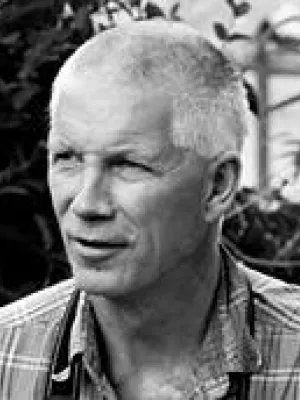
Jonas Ardö
Professor

Importance of In Situ Data in Reducing Uncertainty when Quantifying the African Carbon Budget
Author
Summary, in English
Scarcity of in situ measurements of greenhouse gas (GHG) fluxes hamper calibration and validation of continental assessments of carbon budgets in Africa. It limits essential studies of ecosystem functioning and ecosystem processes. Wide reported ranges of estimated African net primary production (NPP) and gross primary production (GPP) is a function of the uncertainty originating from this scarcity of data. GPP estimates, based on vegetation models and remote sensing based models, range from ~17 to ~40 Pg C yr−1 and NPP estimates roughly range from ~7 to ~20 Pg C yr−1 for continental Africa. Differences in modeled carbon use efficiency (i.e. the NPP/GPP ratio) further enhance the uncertainty caused by low spatial resolution driver data sets when deriving NPP from GPP. Current substantial uncertainty in vegetation productivity estimates for Africa (both magnitudes and carbon use efficiency) may be reduced by increased abundance and availability of in situ collected field data including meteorology, radiation, spectral properties, GHG fluxes as well as long term ecological field experiments.
Current measurements of GHGs fluxes in Africa are sparse and not well coordinated. The European Fluxes Database Cluster includes ~24 sites with flux data, most of them with a small amount of data in short time series. Large biomes such as the evergreen broad leafed forest are no well represented whereas savannas are slightly better represented. USA for example, with 171 flux site listed in FLUXNET has a flux site density of 17 sites per million km2, whereas Africa has density of 0.8 sites per million km2.
Increased collection of data on fluxes of GHGs, ecosystem properties and processes, both through advanced micro meteorological and through cost effective straightforward field experiments can contribute to reduce the uncertainty in quantification of the African carbon budget. Adaptation of crucial resource production systems such as agriculture, pastoralism and forestry, to climatic change, would benefit from additional knowledge potentially gained for in situ studies.
Current measurements of GHGs fluxes in Africa are sparse and not well coordinated. The European Fluxes Database Cluster includes ~24 sites with flux data, most of them with a small amount of data in short time series. Large biomes such as the evergreen broad leafed forest are no well represented whereas savannas are slightly better represented. USA for example, with 171 flux site listed in FLUXNET has a flux site density of 17 sites per million km2, whereas Africa has density of 0.8 sites per million km2.
Increased collection of data on fluxes of GHGs, ecosystem properties and processes, both through advanced micro meteorological and through cost effective straightforward field experiments can contribute to reduce the uncertainty in quantification of the African carbon budget. Adaptation of crucial resource production systems such as agriculture, pastoralism and forestry, to climatic change, would benefit from additional knowledge potentially gained for in situ studies.
Department/s
- Dept of Physical Geography and Ecosystem Science
- BECC: Biodiversity and Ecosystem services in a Changing Climate
Publishing year
2015
Language
English
Links
Document type
Conference paper: abstract
Topic
- Physical Geography
Status
Published

